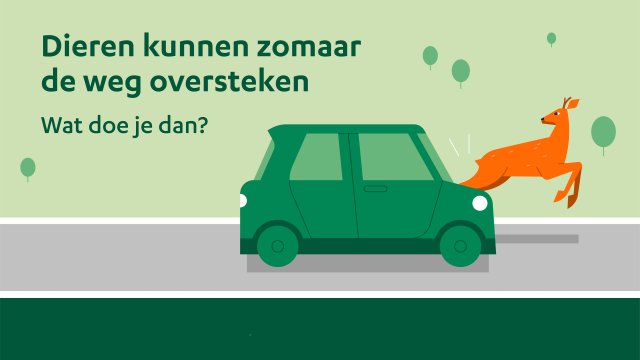Paying attention and adjusting speed for crossing wildlife
As winter time sets in and the clocks go back one hour at the end of October, we see an increase in the number of collisions with animals, including deer in particular. This is why the province of South Holland is starting an information and alertness campaign for road users at the end of October to reduce collisions with animals.
Number of roe deer increases
The deer population in South Holland has grown in recent years from over 2,000 deer in 2019 to over 3,000 in 2025. As a result, roe deer are found in more and more places in Zuid-Holland. Even where these animals did not live before. As a result, the number of collisions is also rising sharply. In 2024 there were more than 250 collisions with roe deer. Beavers and fallow deer also collide with road traffic.
Reduce speed
It is important for road users to adjust their driving behavior by reducing speed. At a maximum speed of 60 km per hour, an animal has a chance to avoid a car or other vehicle. A collision with crossing wildlife is drastic for both the animal and the road user.
Increase in collisions
When winter time sets in at the end of October and the clock is set back an hour, we see an increase in collisions. Animals need time to adjust to our activities. This is why the campaign deliberately starts in the fall. With the information and alert campaign, the province calls for extra attention and speed adjustments.
Risk areas
Most collisions occur in the Dune and Flowerbulb Region, Goeree Overflakkee, Hoeksche Waard, Voorne, Putten, Alblasserwaard, Krimpenerwaard, Surroundings of Dordrecht and the port area of Rotterdam. When a deer population expands, the animals may start to roam. These deer can therefore also be seen on the island of IJsselmonde, in the fringes of the Oude Maas and in the area around the Reeuwijkse Plassen and Nieuwkoopse Plassen.
More information on what road users can do to avoid a collision: zuid-holland.nl/overstekenwild.
